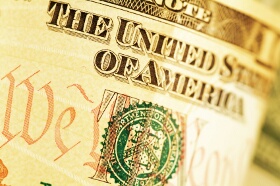The US dollar is mixed against several major currency competitors at the end of the trading week, driven by a grim portrait of the American labor market last month. Although it was a devastating jobs report, experts say that the worst is still to come as more states institute stay-at-home orders. Will the buck remain the top currency in todayâs chaotic financial market?
According to the Bureau of Labor Statistics (BLS), the US economy lost 701,000 jobs in March, lifting the unemployment rate to 4.4%. Last month, the economy gained 273,000 jobs and the jobless rate was at a 50-year low of 3.5%. The market had anticipated a loss of 100,000 jobs and an unemployment rate of 3.8%.
Employment gains for January and February were revised downward by a combined 59,000.
Across the board, industries witnessed monumental job losses. In the leisure and hospitality sector â restaurants and hotels, for instance â employment shrank 459,000. Manufacturing payrolls shed 18,000, while the government added 17,000 workers. There were notable declines in dental and doctor offices with 17,000 and 12,000 declines, respectively. Construction, education, health care, and professional and business services also reported substantial job cuts.
In other labor data, average weekly hours slipped to 34.2 hours and the labor force participation rate tumbled to 62.7%. The average hourly wage picked up 0.4%, or 11 cents, to $28.62 per hour.
The consensus is that the April unemployment numbers will be a lot worse, especially considering that there were more than 10 million initial jobless claims in the last two weeks. Until the coronavirus pandemic is resolved, employers are unlikely to relaunch hiring blitzes anytime soon. A lot of experts are talking about pent-up demand when the outbreak subsides, but that might be hard when incomes are wiped out.
Outside of the employment situation, the IHS Markit composite purchasing managersâ index (PMI) plunged to 40.9 in March, down from 49.6 in February. The services PMI plummeted from 49.4 to 39.8.
The Institute for Supply Management (ISM) reported that non-manufacturing business activity contracted, but non-manufacturing prices and new orders remained at or above 50.
New motor vehicle sales for last month will also be published at the end of Friday.
The US Dollar Index, which measures the greenback against a basket of currencies, soared 0.63% to 100.81, from an opening of 100.20, at 17:06 GMT on Friday. The index is poised for a weekly gain of 2.5%, adding to its year-to-date increase of 4.6%.
The USD/CAD currency pair edged up 0.11% to 1.4153, from an opening of 1.4139. The EUR/USD slumped 0.63% to 1.0789, from an opening of 1.0859.
If you have any questions, comments, or opinions regarding the US Dollar, feel free to post them using the commentary form below.
US Dollar Mixed As Coronavirus Slaughters 701k Jobs in March
